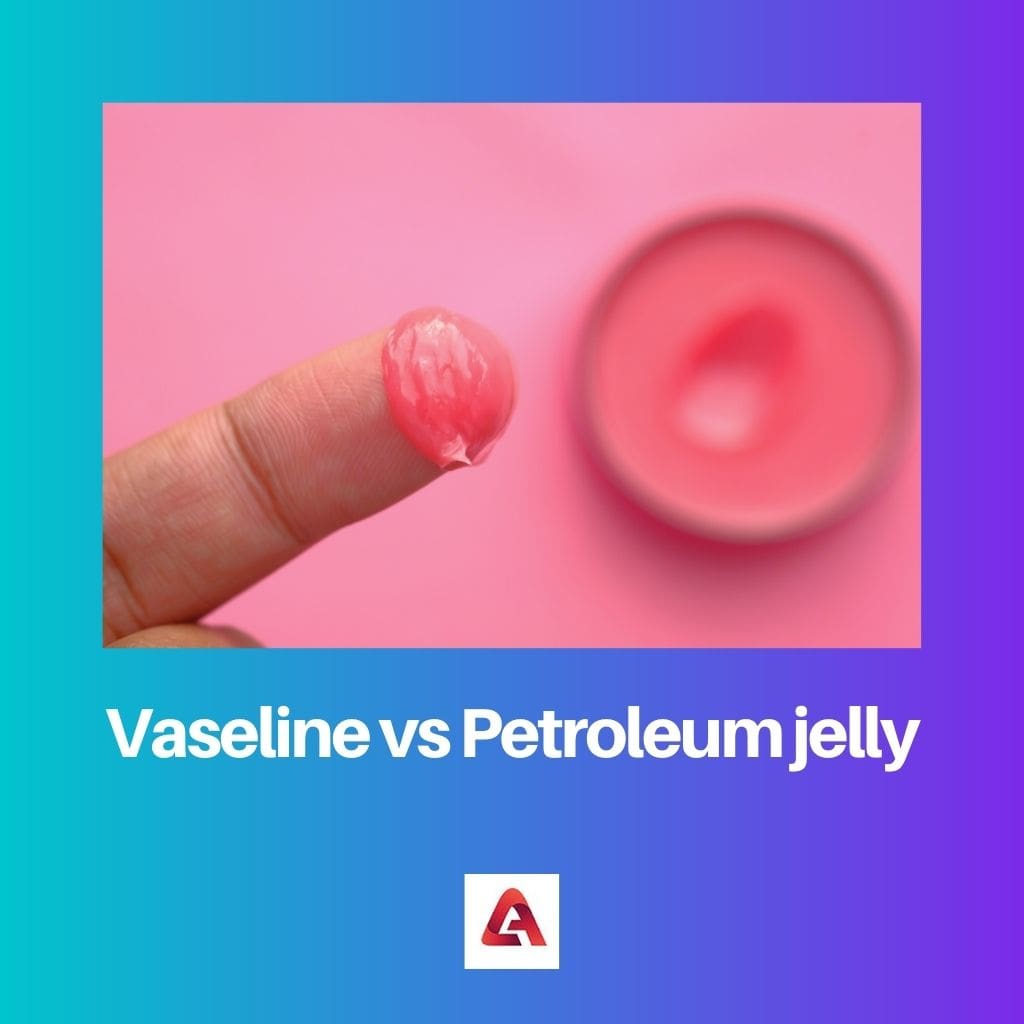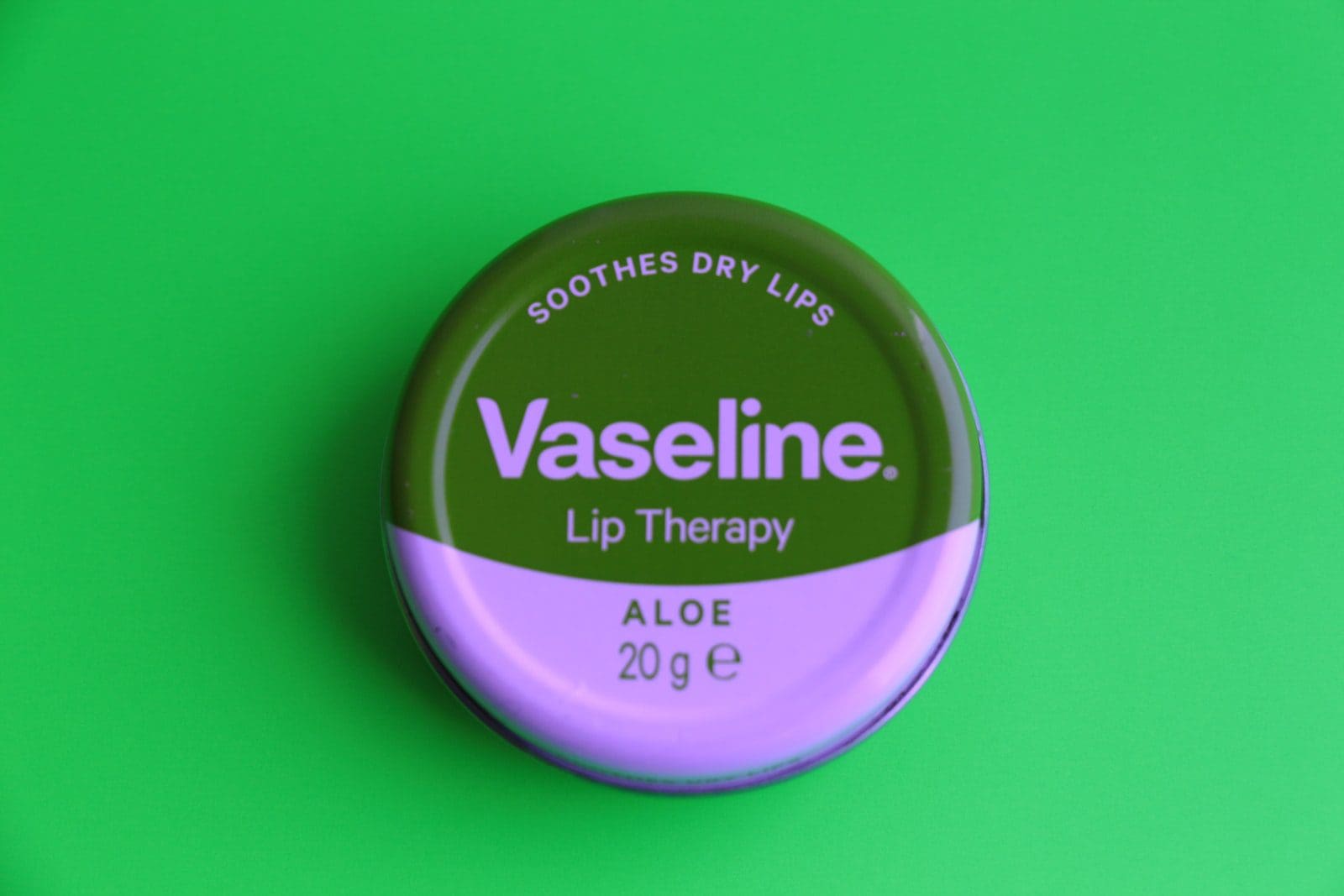Every person has a different skin structure. Some have dry skin, others oily.
A moisturizer is essential for dry skin. As the moisturizer softens the skin, the lubricant softens the frictional parts of the machines.
Winters mark a season of dryness. Therefore, the demand for moisturizers shoots up.
These moisturizers may be aloe-vera based, but the most popular ones are those based on petroleum jelly. However, vaseline and petroleum jelly are different.
Key Takeaways
- Vaseline is a brand of petroleum jelly, a semi-solid mixture of hydrocarbons used as a skin protectant and moisturizer.
- Petroleum jelly is the generic name for the substance that Vaseline is made from, and it can be found in various forms and under different brand names.
- Despite Vaseline being a specific brand, the terms “Vaseline” and “petroleum jelly” are used interchangeably to describe the same product, as Vaseline is a widely recognized and popular brand of petroleum jelly.
Vaseline vs Petroleum Jelly
The difference between vaseline and petroleum jelly is that vaseline is a smooth mixture of mineral oils and petroleum jelly. In contrast, petroleum jelly is a rough semi-solid mixture of hydrocarbons.

Vaseline is a famous petroleum jelly brand. It prevents the skin from losing moisture.
It has been in use for more than a century.
Petroleum jelly is a semi-solid mixture of elements such as hydrogen and carbon. It has several uses in cosmetics and hair-care products.
Comparison Table
| Parameter Of Comparison | Vaseline | Petroleum Jelly |
|---|---|---|
| Definition | It is a patented brand of medicinal petroleum jelly. | It is a mineral extracted from ores. |
| Alternative Names | It is a brand name for medicinal petroleum jelly products. | Petrolatum or soft paraffin. |
| Constituents | Hydrocarbons, mineral oils, and smoothening substances. | 1,1,2 – Trimethyl-1H-benzo[E]indole as the main constituent and other hydrocarbons. |
| Utility | Used as a healer for dry skin, anti-rash lotion, and in hair care. | Used as an anti-corrosive coating, leather conditioner, machine lubricant, and explosive manufacturing. |
| Beginning Ingredient | Made from rod wax. | Made from paraffin wax. |
What is Vaseline?
It is a patented American brand of medicinal petroleum jelly. Unilever owns it.
It is primarily used as a lotion for dry skin. However, it is also used in soaps, moisturizers, creams, and deodorants.
It was Robert Cheseborough who discovered the use of rod wax in Pennsylvania. The rod wax was a residue in oil wells that had to be removed from the extracted oil.
It would float on the surface of oil rigs, and the oil workers applied it to their wounds. Then Cheseborough took a sample of this rod wax with him and extracted the medicinal jelly.
In 1872, Cheseborough patented the Vaseline petroleum jelly. He derived the name Vaseline from the German word Wasser meaning water, and the Greek word elation meaning olive oil.
The beginning ingredient of vaseline is petroleum. The petroleum is first highly refined to make it pure.
Subsequently, mineral oils are added to it to make it smooth. Vaseline is characterized as a protector of skin moisture.
It is non-carcinogenic and has no ill effects on the skin.

What is Petroleum Jelly?
Petroleum jelly is a mineral extracted from oil wells. The alternative names for petroleum jelly are petrolatum, soft paraffin, or multi-hydrocarbon.
Petroleum jelly is derived from paraffin wax. It has many industrial uses.
Apart from that, it is also used as a medicinal ingredient in products such as Vaseline.
Its use is widespread in industries. It is used as an anti-corrosion coating, leather conditioner, machine lubricant, and in manufacturing explosives.
In the cosmetic and medicinal sectors, it has contributed a lot. It is used in lip balms, moisturizers, soaps, and deodorants.
Initially, the oil workers would throw it away from the ores because it used to complicate the working of the machines.
But they used it to heal their wounds. The primary hydrocarbon in the manufacture of petroleum jelly is 1,1,2 – Trimethyl-1H-benzo[E]indole.
It has a melting point of about 40-70°C.
Petroleum jelly is a translucent semi-solid. It is inert to chemicals and is insoluble in water.
However, while medicinal petroleum jelly is white, industrial one is yellow.

Main Differences Between Vaseline and Petroleum Jelly
Vaseline is derived from petroleum jelly. It is a popular anti-dryness lotion.
Although it has only medicinal properties, its parent, petroleum jelly, also has several industrial properties.
The main differences between the two are :
- Vaseline is a medicinal variant of petroleum jelly used as a moisturizer. On the other hand, petroleum jelly is a mineral extracted from oil wells.
- Vaseline is a brand name, whereas petroleum jelly has other words like petrolatum and soft paraffin.
- Vaseline consists of some hydrocarbons and mineral oils, whereas petroleum jelly consists of the primary hydrocarbon 1,1,2 – Trimethyl-1H-benzo[E]indole aside from others.
- Vaseline is used to moisturise dry skin, whereas petroleum jelly is used as an anti-corrosive and lubricant for machines.
- Vaseline is refined from rod wax, whereas petroleum jelly is refined from paraffin wax.

- https://onlinelibrary.wiley.com/doi/abs/10.1111/j.1365-2273.2004.00813.x
- https://journals.sagepub.com/doi/abs/10.1177/1049909113502578

A fascinating and detailed examination of the differences between Vaseline and petroleum jelly.
I never knew there was a difference between Vaseline and petroleum jelly. The more you know!
Same here, this was a very enlightening read.
Yes, I was also surprised to find out there’s a distinction between the two ingredients.
This post was very educational and I appreciate how it goes in-depth into the differences between these two products.
It’s true, this is a great resource for anyone wanting to learn more about the topic.
Great post explaining the differences between vaseline and petroleum jelly. Very informative and well-written.
I completely agree, this article is not only informative but also very easy to understand.
This is a very thorough analysis of the topic, providing a comprehensive comparison between the two products.
It’s always impressive to see such detailed and well-researched content.
I don’t find this topic particularly interesting, but the information was presented in a compelling way. Thanks for that.
Absolutely, I found myself engaged in the topic despite not finding it interesting at first.
I agree, the amount of research and detail is impressive.
I’ve always wondered about the difference and this post really cleared it up for me. Thank you!
Yes, I also learned a lot from reading this. Great explanation.
This post takes a topic that might seem mundane at first and makes it quite engaging to read. Great job!
I appreciate the extensive comparison and the detailed breakdown of the differences. Very well done.
Definitely, this post is a gold mine of information.
Agreed, a great piece for anyone interested in the topic.
I’m not sure why this article is necessary, but the information is well-presented.